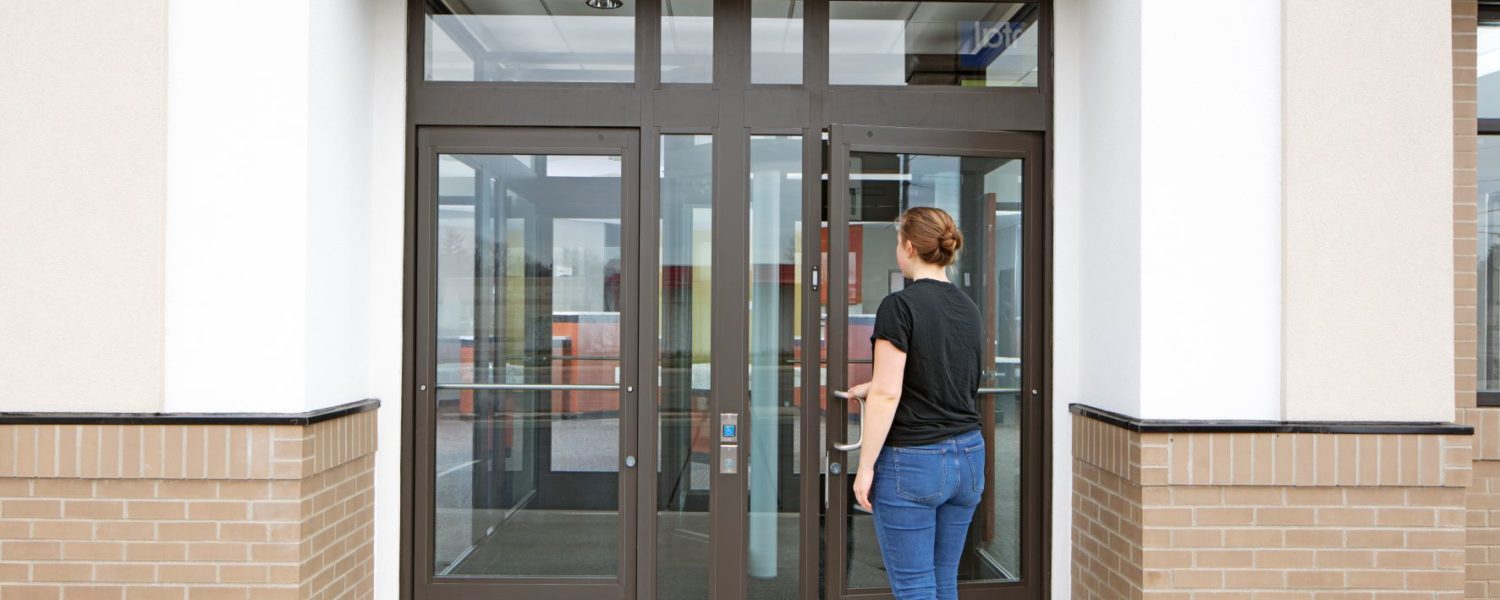Feeling safe in your environment is a necessary requirement for growth and development. However, with the constant negative news cycle, it’s hard to feel safe anywhere, especially in school. Dozens of shootings have already occurred in schools across the country this year, and children are acutely aware of the danger. This environment not only causes a massive amount of stress but also impedes the learning process.
Why Access Control
Safety for a school, like any location, should start at the front door. Being able to monitor who is coming in and what they are bringing with them is the core to any security system. Access control is simply about making sure the right individuals with the right permissions are allowed into secure areas. This form of security can be based strictly on monitoring and reacting or prevention, like not allowing a door to open without proper authority.
The only thing better than reacting quickly to a threat is preventing it entirely. If students, faculty, and guests alike are having to prove their permissions every day to enter the building, the same technology would prove to be difficult to surpass and may deny access to a would-be assailant. Stopping an attack in progress is great, but preventing an assailant from even attempting one is better.
Best Implementation Options
Access control measures come in a wide variety of options. One such variety that is quickly growing in popularity is biometrics. While this is a precise way of confirming authorized individuals, many of the technologies are expensive. They can be as sophisticated as a retinal scanner or as basic as a fingerprint reader, and the cost is reflective of that.
Another more recent reason that biometrics may not be the best choice for most schools is due to the inevitable level of physical touch. Scanning one handprint per student means you may have hundreds of students touch that same scanner every day. In a post-Covid world, it is imperative consider touch-free options.
Key cards are becoming more commonplace every day. Whether it be a small chip in the students ID card, or a fob on their keychain, a key card is a great, easy access control measure. Excellent for schools, key card access control may offer varied levels of security within the building. For example, all student cards may allow them access into the building, gymnasium, lunchroom, and classrooms, but will prevent them from getting into computer labs and offices. This also gives teachers and staff greater access within the same system and can save a lot of money during implementation. Key cards do have their own set of issues, however. Namely that they are fairly simple to lose or have stolen. Not only that, but depending on the technology, they can be easy to replicate.
The most traditional type of access control comes as a Safety Resource Officer (SRO). An SRO offers a personal face, as well as a strong visual deterrent for threats. They can get to know the staff and students on a deeper level and can offer protection not just at the entrance of the school, but within it, as well. A friendly familiar face at the facility’s entrance might be an ideal solution for smaller schools.
Safety Resource Officers, however, are by default mostly reactionary. They can respond to a threat, but aside from checking IDs, there is not much they can do in the way of prevention. There is also the unfortunate risk of bias in any human response. The SRO could see a potential threat and respond to it in a manner they find acceptable, only to find out they have misread the situation or overreacted. This can lead to some terrible PR backlash for the very institution they are meant to protect. The risk of racism, sexism, xenophobia, or any other form of bias could not only scar a student, but permanently damage a school’s reputation. The question that also comes up with a SRO, what tools are you providing them for protection? A baton? Taser? Gun? At what level do you want the reaction to be? And how does that response reflect upon you?
Increasing Efficiency
Access control is not just about allowing certain people in, but also certain objects. These systems are often paired with weapons detection technologies, and this is for good reason. Data centers are among the most secure facilities in the world, and they have a policy of zero trust. This came to be from incidents that showed most attacks on these highly secure sites came from within. This logic must be applied to schools as well; sometimes what or who you are protecting can also be the biggest threat.
Metal detectors have made huge strides in portability, affordability, and detectability. These are often combined with points of access to better mitigate the risk of any situation. We know that the number of students bringing weapons in is far too high, and the barrier to bring them in is far too low. With the new tech that metal detection companies have been able to provide, schools can now afford to have metal detectors that are placed either right before or directly after access control measures. Amazingly, they can also be moved and utilized for events where access control is much more difficult to provide. When we think of school safety, the school itself is often what comes to mind. While that is a very important aspect, activities like band, sports, and many other extracurricular events need protection, as well.
The truth is the best way to implement access control is likely a combination of several options. Key cards can provide a relatively affordable all-encompassing solution. Having a Safety Resource Officer as a backup is likely a good decision depending on the size of the school. Any option can be improved with a weapons detection system integrated within, giving you the strongest form of access control available.
Keep in mind that the best form of access control will have different measures for the different areas of security; places that need more protection will get more. But the most important thing to consider when implementing any form of security is getting the people involved on board. If the students and staff don’t understand, agree with, or follow protocols, despite all the effort put in, the system won’t function. Be sure to explain why this is important, how to operate it, and leave an open line of communication for questions and concerns. The more involved every person is in the access control process, the more successful the process will be.
This information is courtesy of Isotec Security, Inc., which specializes in security door & access control systems, augmented with technologies that detect, isolate, and prevent identifiable threats from entering your facility. They craft both standard and custom, beautiful security solutions for every industry, www.isotecinc.com.









